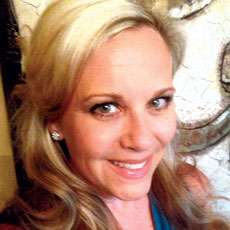
To follow up on my recent blog about CMS changing pressure ulcer quality measurements, I wanted to give advice on how to create a better wound care program.
I was recently asked to comment about the importance of the team approach as it relates to a wound care program. As I pondered the question and my response I remembered how important it was that we were willing to take a step back.
As cliché as “the team approach” to anything might sound, it is truly profound as it relates to management of skin and wound care. The success of the “team approach” has to move beyond just a banner and a mantra especially when it comes to managing the skin system in long-term care.
Many years ago Nexion Health, determined to master the interdisciplinary approach to skin and wound care, took a step back and analyzed why even our best facilities with the most bought-in teams were not succeeding.
What we found is that Nexion, corporately, had not done all we could do to set them up for success. With a lot of homework, organization, streamlining and investment in key resources, Nexion was able to create a clinically based, cost-effective and self-sustaining skin and wound care model that each facility/team could use as a starting point.
This model gave each facility: Access to an in house Certified Wound Care Specialist; a clinically tested formulary skin and wound care algorithm for products and surfaces; in-house therapists competent in debridement, advanced wound care and ABIs; a focus on maximizing savings without compromising clinical standards; and finally and possibly most importantly, a dedicated education and training module based on the “3C’s of Skin and Wound Care. This included a commitment to access and offerings quarterly and as needed per site without fail.
These trainings are tailored for the education level of the employee and are offered to CNAs, nurses, therapists and to physicians/physician extenders. It was during these trainings, Nexion was able to identify champions of skin and those individuals we could invest in to gain wound certification as well as become in house experts and resources.
Facilities quickly moved their focus from “where do we even start” to “this is what we know for sure”. Skin and wound care is a giant science project with controls, variables and lots of hypothesis. Nexion was able to limit the variables, identify the controls to allow our teams to narrow their hypothesis through teamwork and applying root cause analysis.
Nexion also conducts quarterly QAPI on its own skin and wound care program. This makes us certain that what we have learned from the successes and failures of our individual facilities gets shared and/or implemented to all of our sites. With a consistent and organized approach to skin and wound care we found leaders blossom and feel empowered to implement the team approach for skin and wound care prevention and healing.
Wound rounds, which include various team members from nursing, therapy, dietary and even physician extenders, are commonly found in our most successful facilities. It goes without saying that ongoing recognition and empowerment are critical to the success of our facilities. Nearly every time we ask a DON what the key to success in skin and wound care is she/he will say, “Skin is all our responsibility-from housekeeping to therapy to nursing-we all play a part in preventing pressure ulcers and healing wounds as a team!”
So take that step back and harness that pressure to build a successful skin and wound care program. Once you do you can look this new cross-setting measure straight in the eye and say “bring it”!
Tara Roberts, PT, is the Vice President of Rehabilitation and Wound Care Services at Nexion Health.





